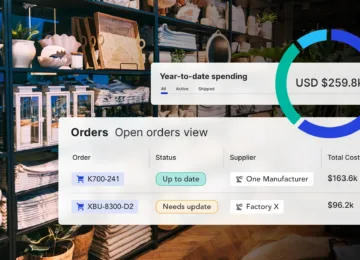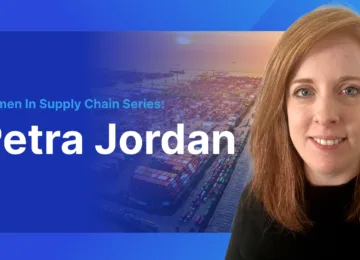E-commerce purchases are at an all-time high this year and particularly today, Cyber Monday. As the holiday season and impacts of COVID-19 puts continued strain on your fulfillment center, it makes sense to consider your options for expanding your fulfillment operations. Moreover, if you’re launching a new product or a brand, the end goal is the same: ship product! For those who are new to supply chain, the implementation of a center can take longer than you ever anticipated. Most of them integrate with Shopify, Woo Commerce, or a custom back-end but confirming data, testing SKUs, and performing simulated kitting can take up to 6 to 8 weeks. Therefore, it’s important to set it up sooner rather than later, especially if you are hoping to launch a new product for a specific season or holiday.
If you’re crunched for time, a comprehensive deep dive into the perfect fulfillment partner may not be realistic. However, it’s an absolute must to consider these three factors when choosing your fulfillment center.
Order Cutoff Times
As an e-commerce company, you’re striving to provide exceptional customer service and timely shipments. The customer is king and needs to be treated as such. Amazon has set exceptionally high expectations with same day and two-day delivery. A key difference is Amazon owns those centers, while you most likely don’t. Order cutoff times do come into the picture as the fulfillment center has to pick and pack the goods followed by a pick-up from the carrier. Just because you order a good on Monday doesn’t mean it will ship the same day. There can be a one business day delay from order to shipping.
Perform your due diligence by asking about these order-cutoff times; they tend to be earlier than you expect! Understand how long it will take to pick and pack, stage the item for shipping, and schedule a pick-up. Walkthrough each day of the week as an example. You will be quick to find that a Friday PM order and Monday AM order will ship on the same day, Tuesday! For some recurring subscription business models, it’s important that consumers get their goods in correspondence to their paid plan. If you plan to adjust shipment cadences based on your fulfillment center, make sure your customer is in-the-know.
Zone Shipping
Take a quick snapshot of populous areas in the United States and you will see heavier populations around the coasts like New York, Miami, Los Angeles, San Francisco, etc. Depending on sales volume and forecasts, one location will more than likely perform shipping. To determine your fulfillment center location, assess where you believe shipments will go to most often. This is important because freight carriers classify shipping lanes into zones (1-9), based upon the fulfillment location and the customer location.
If you have any pre-sales, performed a competitive analysis, or conducted market research, you can ascertain strongholds of where your customers live. Because fulfillment centers are located in areas with lower labor rates, you may tend to find a greater number of centers in Connecticut, Georgia, Kentucky, or Nevada. However, shipping from Connecticut to California is not advantageous because your freight costs would end up in Zone 8. The goal is to cover the zones and not stretch greater than Zone 5.
Depending on the weight of the shipment, rates may be flat but time travel will decrease. As you scale, you will be able to do a deep dive into where your shipments are going. The conventional thought is pulling orders by state; however, to get more concrete results, the analysis should be performed by zip code. Zip codes are how the industry measures rates and time travel. Simplistically speaking, the Mississippi River practically divides the US in half, 26 of those are east and 24 are west.
Shipping Fees
The concept of shipping a package is relatively easy. Pack the contents into a shipping box/mailer, put a shipping label on it, wait for the carrier to pick it up, and ultimately ship it out to your end customer. All is done. However, throughout that entire door-to-door process, there are a number of costs that will impact your COGS that you may not be directly aware of. Pick and pack, # of units, weight, and carrier rates are just a few variables that make up the composite sum of a shipment fee. It’s important to understand the complexity of each shipment and how many touchpoints there are. If you assemble a good at the fulfillment center, each touchpoint will be timed and charged. For example, if two items are going into a shipment box, the second item will have an additional charge.
When considering shipping options, there are two models to explore: Use of the fulfillment center’s preferred carriers, such as Fed-Ex, USPS, UPS or establish your own relationship with a major carrier. USPS will be the last mile carrier for a majority of shipments but a shipping consolidator will hand-off the package to USPS for the last mile delivery. (Many e-commerce companies may already know about the hand-off to USPS and the dead zone of Secaucus, NJ!)
If you’re just starting out, fulfillment centers can initially have larger buying power with carriers but will charge a surcharge for using them. Many fulfillment centers are now bundling the pick and pack, shipping rates, and storage into cost. It’s important to split these out and track over time. Measuring on-time shipping percentage will be an important metric in evaluating the success of your fulfillment partner based on location, carrier, and customer satisfaction.
Selecting and scaling shipping operations must be at top of mind for any growing company. If you’re looking to expand your fulfillment operations or analyze whether your current processes are in line with your customer pool, Anvyl can help – click here to learn more.



